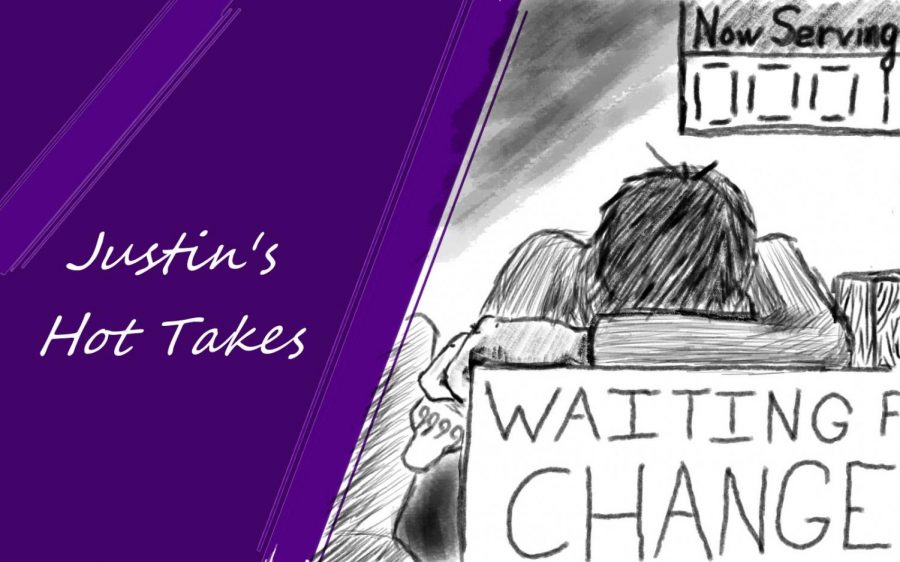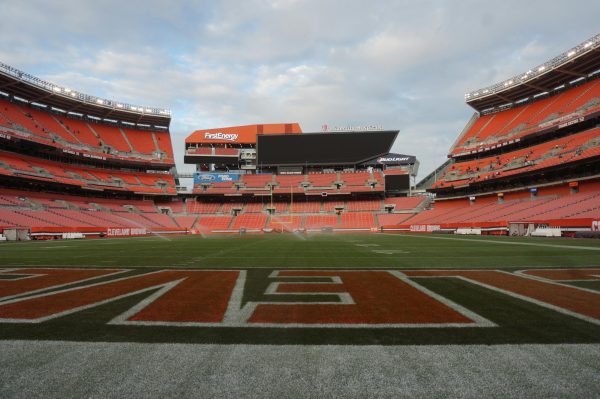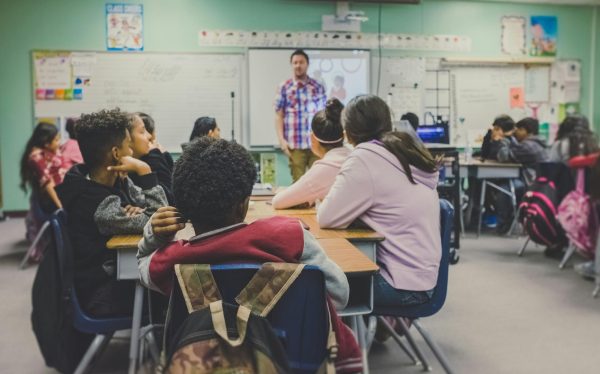Justin’s Hot Takes: Biden’s First Acts: A Great Deal of Words and A Great Deal of Waiting
Despite the feeling of stability from a President who does not use daily drama to manipulate the American people, the news cycle has not slowed down. It has only become less flashy. The notes and research for this article were amended multiple times to add new developments, and I still feel like it is likely that I missed an action taken by the Biden administration. So keep on the lookout yourself, and know that more actions will have been taken by the time this meets your eyes.
With Joe Biden as President, several actions have been taken that signal good things to come, but there has been a general feeling of sitting down to wait for things to happen as well. This has resulted in an unfortunate double-pronged criticism, from Democrats who feel that Biden has done too little, sometimes despite his legal ability reaching the limits, and from Republicans who feel that Biden is not committing to “unity” by pushing his plans forward despite Republican objections. And the rest of the criticisms will be mentioned when we get there by side as a generality because there is an amount to go through.
The most important action Biden has taken so far is pushing for a covid relief package. His 1.9 trillion dollar plan includes $1,400 checks to Americans that begin to phase out around the 75k area (depending on family and dependents), $160 billion to address Covid-19 through items such as vaccinations (which an invocation of the Defense Production is supposed to help despite the void of details released by the Biden Administration on what that looks like), $170 billion in order to reopen schools, $350 for State and local government relief, an increase to federal jobless benefits of $400 through September, $50 billion for loans and grants to small business, and other general assistance such as rental assistance, food assistance through food stamps, assistance with child care, child tax credits, a restoration of 14 weeks of emergency paid leave for quarantining, as well as an increase to a $15 minimum wage over the next five years. Now that is a wide-ranging relief plan; however, most of it is fairly unobjectionable, taking the numbers out of it. While I may personally agree with raising the minimum wage (and tying it to inflation so people do not lose buying power over time), I think it was an unnecessary and slightly risky thing to add to the relief bill. Not only is it a fairly partisanly divided issue, but there are also Democrats, such as the senator, Joe Manchin, who disagrees with raising the minimum wage, which could have put the bill in jeopardy and did create a stir. Now, to the disagreements about numbers, Democratic voters were upset about the campaigning of $2,000 checks being ultimately $1,400 checks without any Republican haggling despite the slippery addition of the previous $600 checks equalling $2,000; Republican politicians were upset about the price tag, especially after the recent stimulus bill being passed so recently (as well as a bad faith concern about the national debt). Republicans did offer a $618 billion counter-proposal, but it was shut down by the Democrat majority who had the mentality of there being a greater danger in going too small rather than too large. Republicans did make a stir about the partisan forcing of the bill being against Biden’s messaging of unity; however, in my own opinion, it is less unifying to cut a plan in third for a governmental minority at a time where most of the population has been looking for stimulus plans with hope and desperation repeatedly through the last year, while a crisis is still ongoing. So for now, we wait.
Biden has signed a flurry of executive orders since arriving in office, a total of 28 (As well as a number of executive actions such as executive memorandum which headlines have been inflating together). He has signed enough to be approaching the record set by Franklin Delano Roosevelt, who signed 30 in his first month during the Great Depression. Republicans have chastised the amount as an overreach of executive power, in the sense of propriety; however, Donald Trump signed nearly 220 executive orders in his four-year term compared to the usual 300 rough average from modern eight-year presidents. Democrats have chastised these orders for not doing enough, despite the limitations of creating action through an executive order that can be achieved without being struck down by the Supreme Court.
List of Executive Orders and Summary:
-13985: Racial Equity in the Federal Government
This executive order effectively creates a council whose job is to create solutions to problems of systemic discrimination, especially in government acts. It also revokes a ridiculously written executive order by Trump that has political grand-standing about cultural issues to justify banning affirmative action and sensitivity training in the federal government.
-13986: The Census
The Secretary of Commerce is ordered to take all actions necessary to ensure a proper counting of the population despite the immigration status question debacle.
-13987: Covid-19
The position of Covid-19 response coordinator, a very clever name, will be created to help create and manage a federal response to Covid-19.
-13988: Preventing discrimination based on gender identity or sexual orientation
This effectively makes the federal government focus on applying the anti-discrimination rules already in place through court rulings and the 1964 civil rights act.
-13989:Ethics Commitment
This bans lobbying and revolving door shenanigans in the executive branch. It also commits to acting ethically in regards to actions like the emoluments clause (a rule against profiting from a public position) and others that seem to be written as a public message that the Biden administration will follow the rules in a way that the Trump administration did not.
-13990: Public health and tackling climate change
This is the second-longest of the Executive orders, at the time of writing, with seven pages of legal revocations and goals. The newsworthy revocation is of the XL pipeline permit (which is covered by Maddie Cercone on the Crimsonian website, which you should definitely read). It revokes a series of executive orders by Donald Trump which run counter or create inconsistencies with Biden’s plans. Plans which include reducing greenhouse gases, reduce arctic drilling, review changes made to a treaty with tribal governments concerning land with national monuments, and create new jobs in the renewable energy sector.
-13991 Protecting the Federal Workforce and Mask-Wearing
This mandates federally employed workers to wear masks and generally comply with CDC guidelines as well as establishing a task force to guide federal agencies in creating safe working environments. This is accompanied by a “mask challenge” to the citizens of the U.S. presumably because the President does not have the power to uniformly mandate the wearing of masks across the nation, although if one party did not make it a political issue, I feel like the pushback to an emergency action such as that would be much smaller. As it is, we live with the “mask challenge.”
-13992 Ctrl-Z on Executive Orders (Around Regulations)
This executive order revokes a series of Trump’s executive orders centered around weakening regulations.
-13993 Revision of Civil Immigration Enforcement Policies and Priorities
This revokes an executive order which prioritizes the deportation of all illegal immigrants. From my understanding of the pages of articles and legal wording, this will revert the priority back to deporting illegal immigrants who have committed a crime after their arrival.
-13994 Ensuring a Data-Driven Response to Covid-19 and Future Public Health Threats
This tasks the Covid Response Coordinator and an appointed taskforce to improve data collection about cases and deaths, as well as make the data more available to the public.
-13995 Ensuring an Equitable Pandemic Response and Recovery
This executive order largely establishes the Covid-19 Health Equity Taskforce who is purposed with reviewing and improving the equality of the Covid-19 response. In other words, their purpose is to fix the systemically worse results that communities, specifically minorities, have been receiving.
-13996 Establishing Covid-19 Pandemic Testing Board, Ensuring a Sustainable Public Health Workforce, and other Biological Threats
Well, it establishes a Covid-19 Pandemic Testing Board which is tasked largely with improving systems of testing and tracing throughout the United States.
-13997 Improving and Expanding Access to Care and Treatments for Covid-19
This tells cabinet members to invest in research at rural hospitals, and into the long-term effects of catching Covid-19. It also tasks relevant cabinet members to review and offer improvements to the public health system, namely in addressing Covid-19 cost, and improvements in access, especially to government programs of Healthcare.
-13998 Promoting Covid-19 Safety in Travel
This mandates mask-wearing on public transport and proof of a negative covid test to enter the country on an airplane. It also requests the cabinet to reach out to Mexico and Canada to improve land travel restrictions and to make sea travel restrictions.
-13999 Protecting Worker Health And Safety
This task is a review of whether a lack of a mask is a worker’s safety violation that the government should step in to protect (to be announced on March 15). It also asks for general information about workers’ rights in order to protect them.
-14000 Supporting the Reopening and Continuing Operation of Schools
This tasks the Secretary of Education and Secretary of Public Health and Human Services to create guidelines and provide assistance in reopening and running schools, higher education, and childcare.
-14001 Sustainable Public Health Supply Chain
This tasks relevant cabinet members to review the availability of medical supplies and to advise if further use of the Defense Production Act is necessary. It also tasks improving and fixing the supply chain faults that were exposed by the pandemic, such as an overreliance on foreign manufacturing of necessary medical supplies, and distributing them among state and tribal governments.
-14002 Economic Relief Related to Covid-19
Asks for executive agencies to “identify actions” to help state, local, and tribal governments. Now, we have to wait for actions to be identified and put in place.
-14003 Protecting the Federal Workforce
This revokes a series of orders by Donald Trump that is described as unconducive to a good civil service environment. It claims that the executive order undermines the Pendleton Civil Service Act (a monumental piece of reform that limited the effects of the spoils system: where politicians gave jobs to supporters and family, despite lacking qualifications, as a reward). It also asks agency heads to lift the federal workforce’s minimum wage to 15 dollars and encourage collective bargaining with the use of Unions.
-14004 Enabling All Qualified Americans to Serve Their Country in Uniform
This revokes the Transgender military ban. I still can not believe that such blatant segregation just stood as U.S. policy.
-14005 Ensuring the Future is Made in All of America by All of America’s Workers
This basically prioritizes federal contracting, buying, and funding to businesses in America. It does focus the process by putting a director in charge of reviewing federal waivers. It also revokes Donald Trump’s orders of a similar vein, assumedly to just get rid of inconsistencies between the different orders.
-14006 Eliminating Private Prisons
This just says that the Federal Government will not renew private prison contracts, which is good; however, it is ultimately a small action since most prisoners are held at the state level. So, it is good; we just need it to go further at the state levels.
-14007 President’s Council of Advisors on Science and Technology
This executive order is a little weird. Understandably, it constructs an advisory board of experts outside the federal government to advise the executive branch (seemingly about advancing the pursuits of science). However, it revokes a similar order by Donald Trump from October 2019 of the same name which revokes one by the same name from the years of Obama (a cycle which continues on the Federal Register until a missing executive order from 1993 being revoked). According to Wikipedia, it started with FDR; however, I could not find a reason that every administration, usually relatively early in their term, resigns and revokes instead of just amending or reappointing.
-14008 Tackling the Climate Crisis at Home and Abroad
This one is a bit of a behemoth. It submits an “instrument of acceptance” to rejoin the Paris Agreement, States intention to host Leaders’ Climate Summit, creates a position: Special Presidential Envoy for Climate, the White House Office of Domestic Climate Policy, and the National Climate Task Force consisting of Cabinet Members. From there, it sets objectives such as getting electric vehicles for federal, siting and permitting new lands and waters for renewable energy, ending fossil fuel subsidies (goal by 2022), review oil and natural gas collection on public lands to adjust rates, using federal funding for renewable energy innovation, to create a Civilian Climate Corps which seems to intentionally hearken in name to FDR’ Civilian Conservation Corps, set a goal to conserve 30% of our land and water, find ways to protect fisheries and from wildfires affected by Climate change. It also creates two more councils, one to revitalize “energy communities” (such as towns with an economy around oil, coal, or a power plant), and one to seek environmental justice and create economic opportunity. That’s fifteen pages of executive order condensed, and all I could think of while condensing it is that we needed this years ago.
Federal Clean Electricity Vehicles
-14009 Strengthening Medicaid and The Affordable Care Act
This opens a SPECIAL ENROLLMENT PERIOD to “seek coverage through the Federally Facilitated Marketplace” (ACA and Medicaid). It also seeks review of policies that undermine pre-existing condition protection and policies that undermine access to Medicaid and the ACA and Medicaid. As well, it revokes two executive orders that are named “Minimizing the Economic Burden of the Patient Protection and Affordable Care Act Pending Repeal” and “Promoting Healthcare Choice and Competition Across the United States” (ACA and other government healthcare are often criticized as anti-competitive) to give you an idea of how they undermine the goals of this Executive order.
-14010 Addressing the Causes of Migration and the Orderly Processing of Asylum Seekers
This order tasks members of Biden’s Cabinet and Executive agencies with finding ways to address the causes of migration, focusing on Central American countries, in order to decrease the needs of people who feel like they must migrate here. It also asks for improvements to the Asylum system, where it also revokes a number of executive orders and memorandum by Trump which were tough on immigration.
-14011: Fixing Family Separation at the border
This executive order asks for the reunification of families separated during the zero-tolerance policy, despite about 600 parents being lost to the U.S. government. This also revokes an executive order by Trump that effectively blames Congress for the effects of Trump’s zero-tolerance policy at the border.
-14012:Improving Legal Immigration
This executive order asks for executive agencies to change policies to support immigrants, refugees, and integration paths. It also asks for a clearing of impediments as well as a general improvement to the legal immigration pathway.
These executive orders are not everything that he has done (such as stopping the Muslim ban and declared an emergency at the border through Presidential declaration), but they are a good representation. They promise change, but they also ask for patience for those to be changed. And there is a great deal of people upset by that. Some want more change immediately, and others dislike the change. Either side that you land on, it is important to keep your eyes on what happens once Biden is done showing a symbol of productivity.
The other important early day decisions facing Biden have been appointing his cabinet members. Most of his cabinet choices have not been confirmed as of yet, but that is relatively normal. I won’t throw a list of names because that would mean very little to either of us. Generally, Biden has nominated a diverse cabinet with relevant prior experience to their position while drawing deeply from Obama’s roster with picks directly from his cabinet or beyond such as Merrick Garland being appointed as Attorney General. Pete Buttigieg being nominated as secretary of transport is one of note. While he creates a more diverse cabinet and is a young Democrat with prominence, he has little specific experience with transportation which has drawn criticism from the left. While there are a good number of well-qualified people in his cabinet, I would like to highlight Debra Halaand, the Secretary of the Interior candidate, who would be the first native American in charge of the departments that specifically deal with Native American issues (and there more examples of not only groundbreaking diversity in his cabinet but more importantly there are more members who have a history fixing the problems of their marginalized group such as with Michael Regan as the EPA administrator).
And to cap off the discussion of nominations, I will mention that Biden fired Peter Robb from his position at the National Labor Relations Board, an independent executive agency. The early firing has come under fire from the right due to questions of illegality concerning the fact that the agency is supposed to be independent. The left has shown excitement about having a pro-union man beginning to lead the charge at that agency after years of anti-labor stances coming from the NLRB.
While foreign policy is not my specialty, it is an extremely important point to keep on top of. Biden has stated that he supports ending the war in Yemen, something with bipartisan support (The war in Yemen being what created a “humanitarian crisis” with 80 percent of its population needing humanitarian crisis). He has threatened sanctions on military actors in response to the coup in Myanmar. He has stated that the United States will not roll over to Russia (which is having severe nationwide protests due to the jailing of Putin’s opposition leader). Biden has also vowed to allow more refugees to be able to take safe harbor in the United States. He is also working to rebuild relationships that have atrophied during the past four years both on a communication level as well as an organization one by rejoining the Paris Climate Accords, rejoining the W.H.O., and rejoining a U.N. human rights council that has countries such as China, Saudi Arabia, and Russia (so that last one may be questionable despite the good from the first two).
While Biden has done a considerable amount in his first few weeks, there is still more to be done whether you like his moderate policies or wish for more progressive or conservative policies. And time needs to be given for actions to come to fruition despite how desperately change is needed now in places mentioned and unmentioned by Biden. When enough time has passed, we, as a nation, cannot afford to let our politicians fall into a political gridlock that only hurts the American people. We can not let another “hope and change” President change nearly nothing in the lives of the discontent and desperate.
So for now, we wait. We wait and prepare to make our voices heard if this administration lets down the people who voted for the Democratic ticket once again because these actions can not be where change stops.

Justin Page, while being a new addition to the staff of the Crimsonian, is a Senior at DHS. He participates in groups such as the Choir, the Orchestra,...











